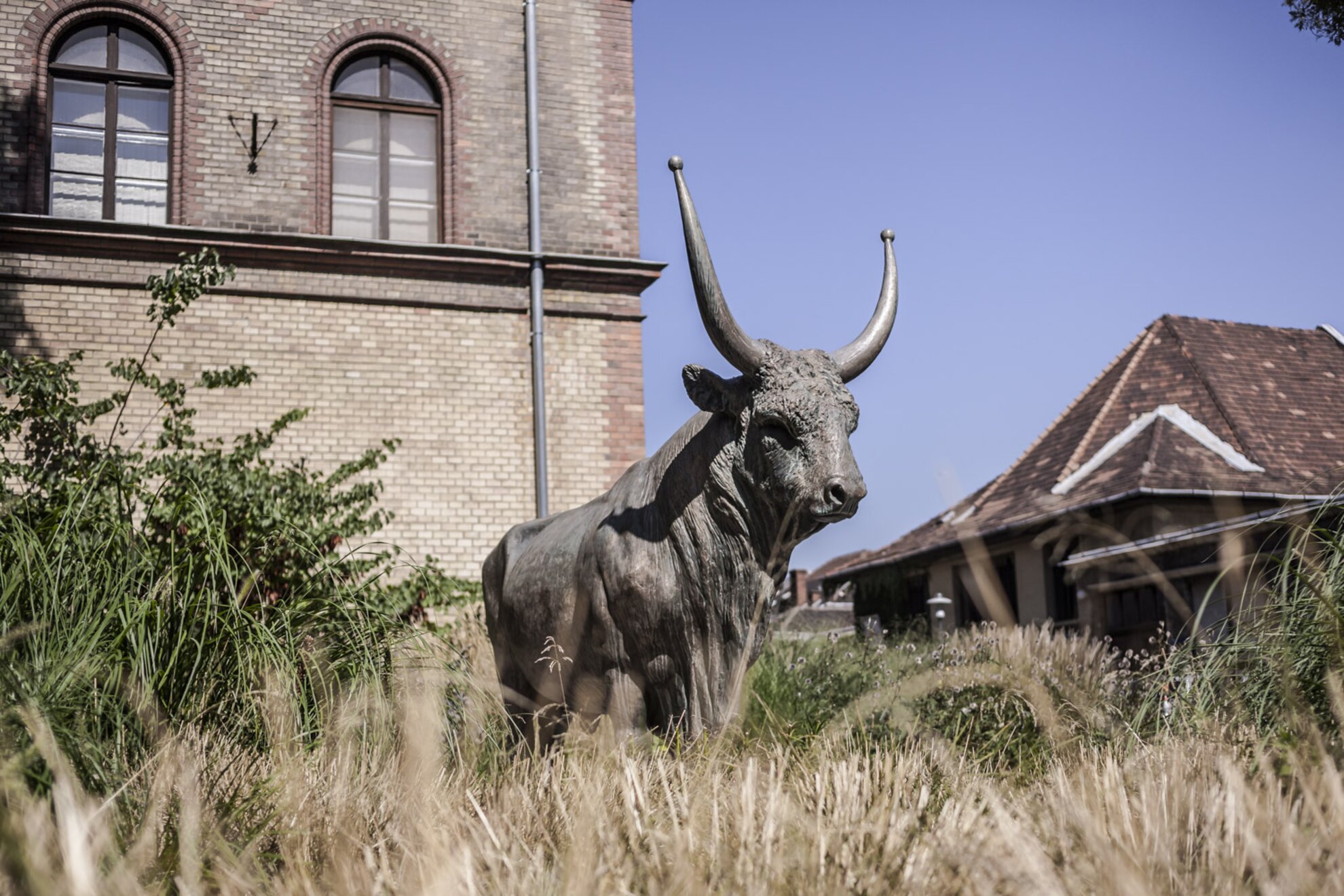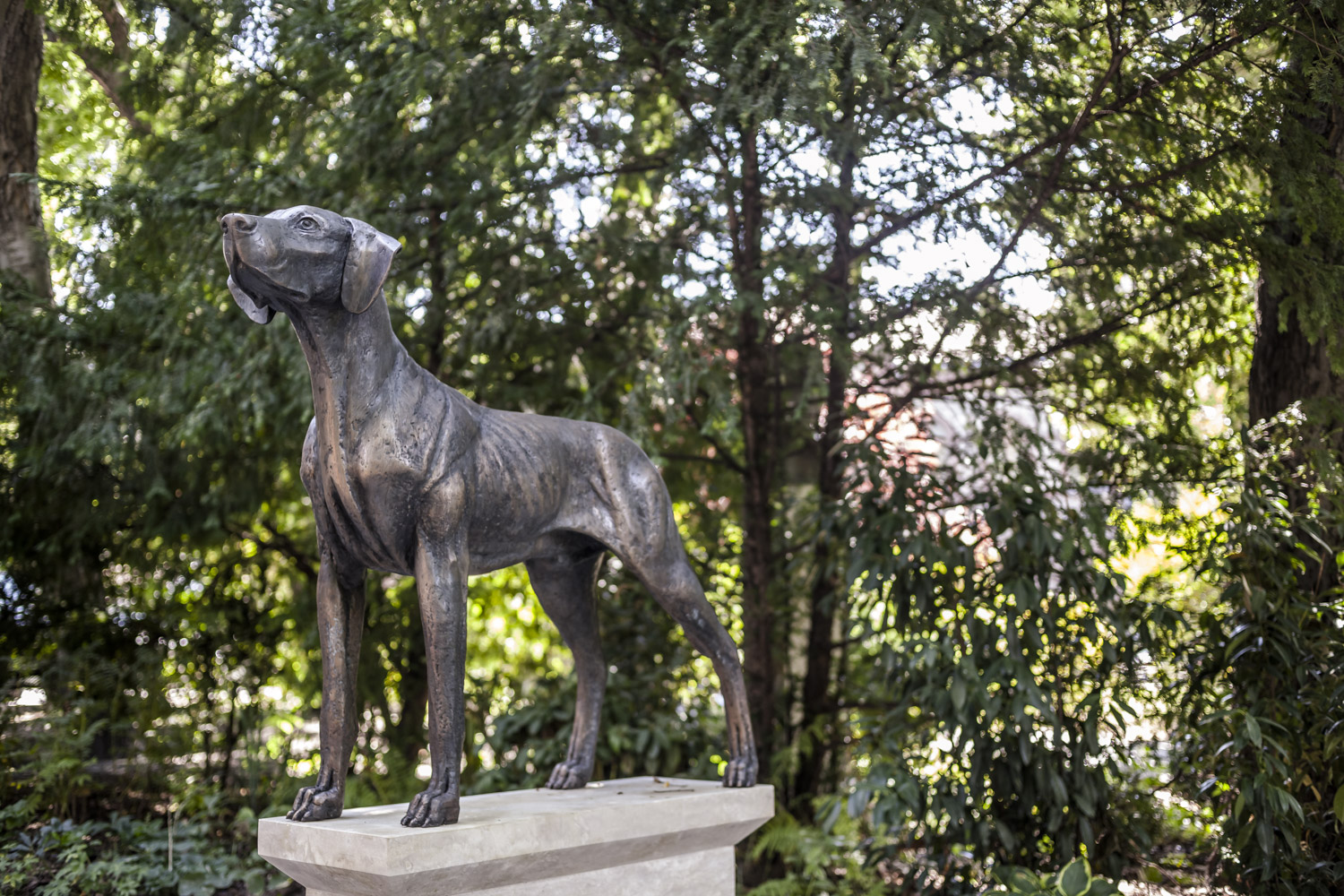With the beginning of the new school year in September, students of the University of Veterinary Medicine (Budapest 1078, István u. 2) can now discover a fresh facility showcasing nine of Hungary’s heritage dog breeds. This recent addition to Budapest’s sprawling downtown campus certainly enhances the school’s welcoming atmosphere, and this newly established statue park does not only provide a guarded chill-zone for students of the organization, but the school’s verdant parkland is accessible to the public, so that anyone who comes here for a leisurely stroll or to bring their pets to the university’s own veterinary clinic can now admire the artfully sculpted domestic canines. Inaugurated in July in honor of the establishment gaining independence from Szent István University, the four-legged displays envelop what was once a circular-shaped cattle-pen where ailing livestock would be examined during the times when this building complex served as the main veterinary clinic for large animals.Today, the clinic operates as a hospital for ordinary pets and exotic animals, and in accordance with its current function, visitors to the establishment’s sylvan parkland can learn about Hungary’s traditional dog breeds, originally used in varied agricultural sectors. This clever canine selection by Magyar sculptor Gábor Benő Pogány includes breeds employed in hunting, like the widely cherished short-coated Hungarian Vizsla and the long-haired Wirehaired Hungarian Vizsla, alongside types that are not so widely known, like the Transylvanian Hound or the Hungarian Greyhound. Dogs engaged in guarding livestock include the hefty Kuvasz and the Komondor (known for its long, corded coat); both of these breeds are now mainly kept to secure property, especially in the Hungarian countryside. The three small-sized dogs found amid the displays – the Pumi, the Mudi, and the increasingly world-famous Puli – are considered ideal for herding cattle and sheep. Even though some of the sculptures might not be perfectly identical representations of the real-life breeds, the figures at this special park are a great initiative to honor the animals’ original roles, since the majority of these dogs are most likely kept as pets nowadays.The sculptures surround a round-shaped wooden bench decorated with vibrant blossoms in the center, making this part of the park an ideal place for a thoughtful getaway, but the campus boasts several other sedate scenes that everyone can freely explore. By the university’s main entrance we find an oversized bull of the renowned Hungarian Grey Cattle species, and we learn that this monumental installation created by Magyar artist Béla Domonkos commemorates the golden era when this local livestock was abundant across Hungary’s countryside. (Rumor has it that anyone who hops on the back of the bronze bovine before completing their university studies won’t be able to obtain a diploma, so the bull is usually left alone until graduation day, when many fresh alumni frolic atop the massive statue.)

Around the campus, we can also admire the university’s neo-Renaissance brick buildings designed by celebrated Magyar architect Imre Steindl, whose name is attached to numerous architectural masterpieces nationwide and beyond, including the Hungarian Parliament in Budapest. If we take a closer look at these understated constructions, we can spot colorful majolica decorations lining the facades, intricate glasswork by Hungarian stained-glass genius Miksa Róth, and several embossed depictions mounted on the historic edifices that depict varied scenes related to veterinary science.Along the park's lovely little pathways, numerous busts are scattered around the grounds that portray venerated veterinarians, including József Marek (known for the discovery of a poultry disease that bears his name today), or parasitologist Sándor Kotlán – the sculptor of the latter luminary represented the doctor in a slightly distorted way to artistically demonstrate the medic’s unsavory specialty. And while we stroll across the sylvan setting, we hear fountains burbling, birds chirping, people chatting, and dogs barking – all part of the university's daily life, which only grows more active as this city-center parkland fills with even more life as students flock back to university in mid-September.A visit to the campus of the University of Veterinary Medicine, complete with all of these attractions, feels like strolling around one of Budapest’s suburban zones, and it is a perfect place for students who want to just lounge here or prepare for lessons between classes, but the expansive campus is also appealing for any city dwellers who long to unwind while surrounded by the university’s fascinating flora (and fauna).




